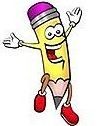By the time they are 5 years old, children should be able to:
Number Sense
- count verbally to 20 or beyond
- provide the next number in sequence (between 1-10)
- count out 10 – 20 objects accurately
- identify the numbers 1-10
- write some numerals (up to 10 or beyond) and connect each to a counted object
- recognize and name the number of items in a set of five
- make a collection with the same number as another collection
- name parts of any whole up to 5, or the whole given the parts
Comparing and Ordering
- use comparative language (more, less, same) to compare collections up to 10
- recognize when a collection with a larger quantity of objects is made up of smaller objects
- order three to six objects by one attribute (e.g. size, shape, colour)
Basic Operations
- find results for joining (adding) and taking away (subtracting) by using concrete objects and counting them all
Algebraic Thinking (Patterns and Relations)
- understand that, when adding three numbers, it does not matter which two were adding first
Measurement
- align two objects to determine which one is longer or if they are both the same length
- measure with a ruler (although may not fully understand what to do or exactly how to do it)
- put several shapes together to make part of a picture
Data Analysis
- sort objects by one attribute (e.g. size, colour, shape)
Geometry (Shapes)
- recognize and compare most familiar shapes (triangles, circles, rectangles, squares)
- name some three-dimensional (3D) shapes (cubes, spheres, pyramids)
- combine simple shapes to form larger shapes (can use tangrams for this)
- recognize sides and angles for some distinct geometric objects
Spatial Sense
- identify positions of objects by positional words (beside, inside, next to, above, below, under)
- use and respond to positional words
